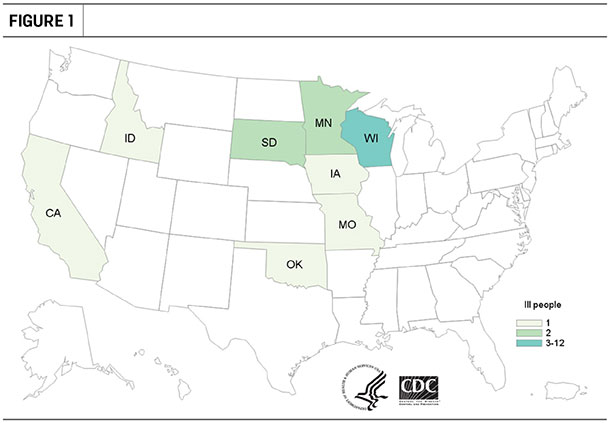Federal and state human and animal health officials are investigating a multistate outbreak of salmonella Heidelberg infections, with the likely source traced back to dairy bull calves from Wisconsin.
The Centers for Disease Control and Prevention (CDC) is working with Wisconsin health, agriculture and laboratory agencies, several other states and the U.S. Department of Agriculture Animal and Plant Health Inspection Service (USDA-APHIS) to investigate the outbreak.
Through PulseNet, a national database of salmonella bacteria DNA, CDC identified about 20 people in eight states who became ill between Jan. 11-Oct. 24, 2016. Eight people were hospitalized, but no deaths have been reported. Illnesses that occurred after Oct. 24 might not be reported yet because reporting takes an average of two to four weeks.

Whole genome sequencing showed the likelihood of a common source of infection. Most of the people who became ill reported contact with dairy bull calves or other cattle. Some of the ill people reported that they became sick after their dairy bull calves became ill or died.
One ill person's dairy calves were tested, identifying salmonella Heidelberg. Further epidemiologic, trace-back and laboratory findings identified dairy bull calves from livestock markets in Wisconsin as the likely source of infections. Wisconsin health and agriculture officials continue to work with other states to identify herds that may be affected.
The Wisconsin State Laboratory of Hygiene also conducted antibiotic resistance testing, finding the clinical isolates resistant to amoxicillin-clavulanic acid, ampicillin, cefoxitin, ceftriaxone, chloramphenicol, nalidixic acid, streptomycin, sulfisoxazole, tetracycline and trimethoprim-sulfamethoxazole and had reduced susceptibility to ciprofloxacin. The two isolates tested were susceptible to gentamicin, azithromycin and meropenem.
People can become infected by salmonella bacteria through contact with animal manure, but it can also be passed from person to person. Officials urged cattle farmers and veterinarians to take hygiene, biosecurity and testing measures to minimize the potential for infection and spread of the bacteria.
"It's in a dairy owner's best interest to take precautions now to minimize the effect that this bacteria could have on those that work closely with the animals," said Wisconsin State Veterinarian Dr. Paul McGraw.
Find advice for veterinarians and anyone handling livestock on the CDC website. ![]()
—Compiled from CDC news releases by PD staff
PHOTO: Courtesy of the CDC.





